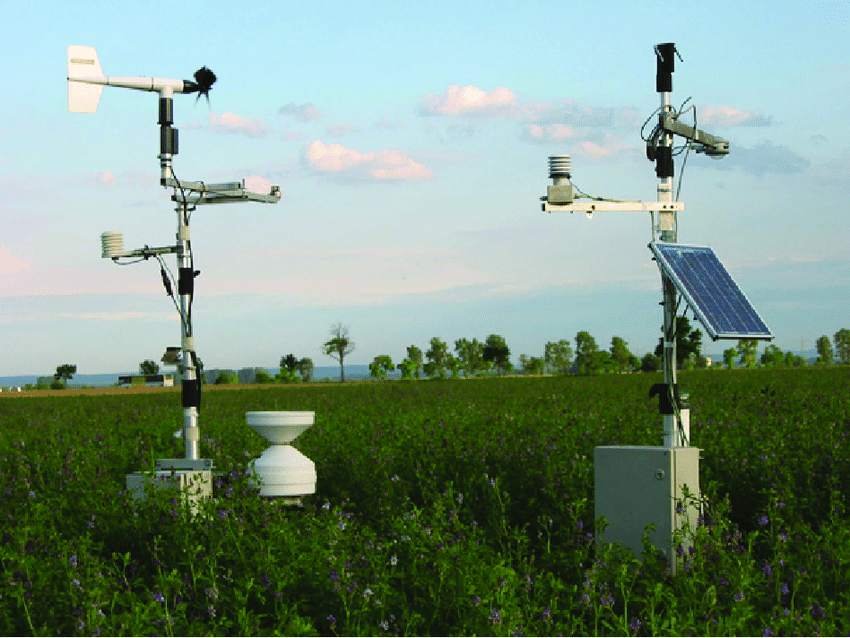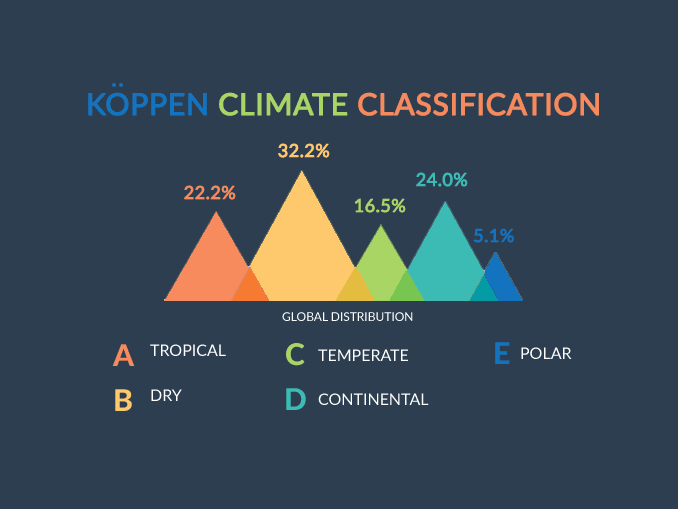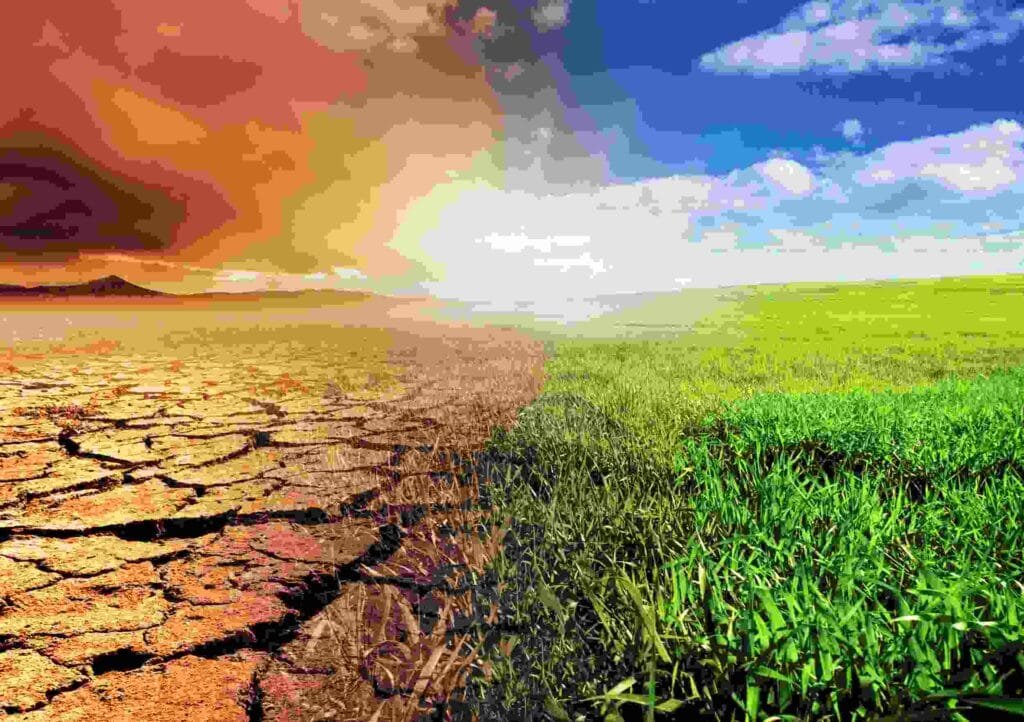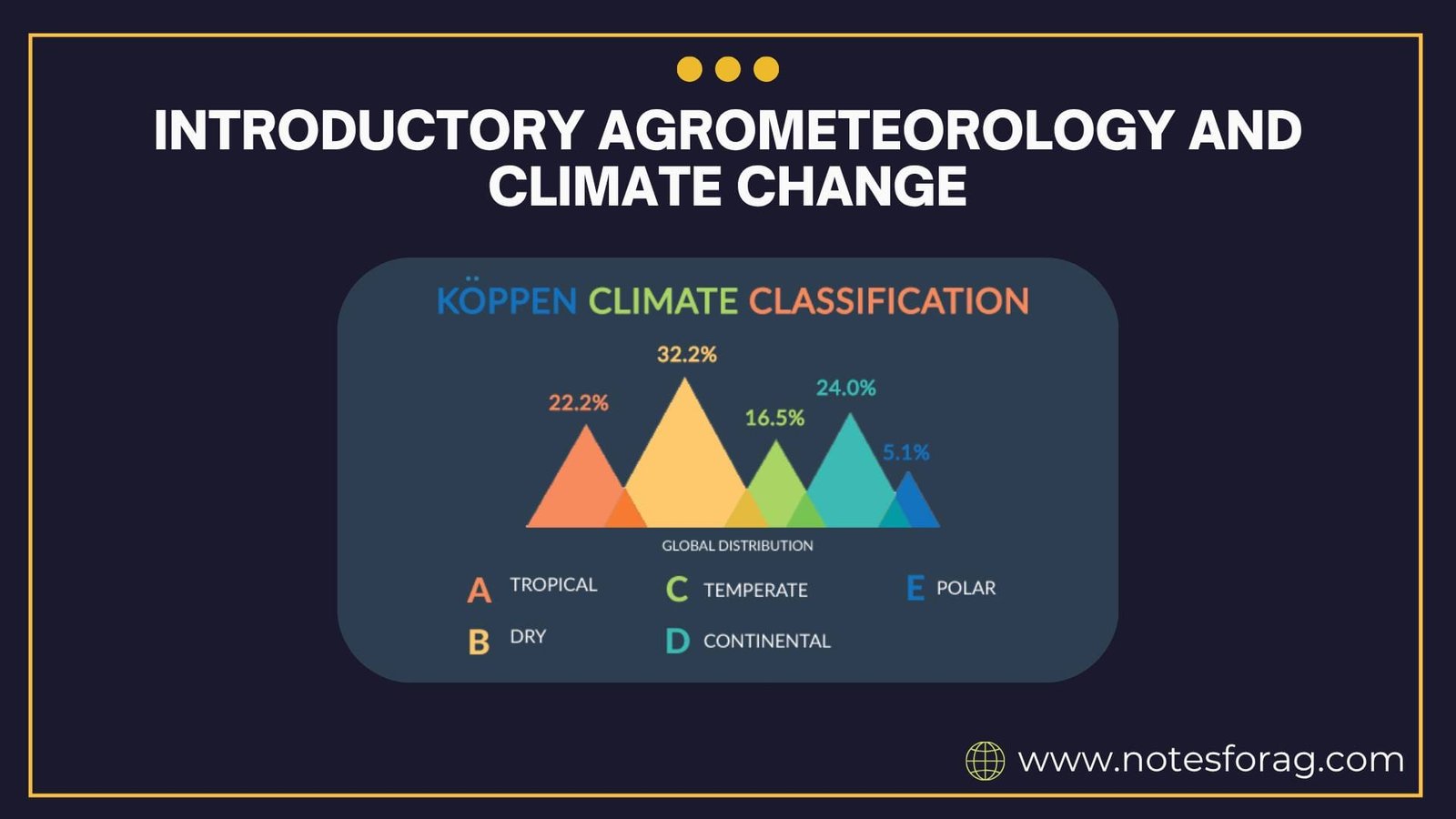Introduction
Agrometeorology is the branch of meteorology that deals with the interactions between meteorological and hydrological factors and agriculture. It plays a vital role in helping farmers make decisions about crop planning, irrigation, pest and disease management, and harvesting. Climate change, on the other hand, refers to the long-term alteration in global or regional climate patterns, which is largely driven by human activities, especially the emission of greenhouse gases. The merging of agrometeorology and climate change studies has become critical for modern agriculture, aiming to ensure food security in the face of increasingly erratic weather.

Summary of Agrometeorology
- Agrometeorology studies the interaction between weather, climate, and agriculture to improve farming decisions and crop productivity.
- Climate change impacts agriculture through rising temperatures, erratic rainfall, and extreme weather events.
- Sustainable farming practices and climate-smart strategies are essential to adapt to and mitigate these climate-related challenges.
Table of Contents
Definition of Agrometeorology
Agrometeorology, or agricultural meteorology, is the science that studies the weather and climate in relation to agricultural production and operations. It involves the application of meteorological data to improve the efficiency and sustainability of farming practices.
Importance of Agrometeorology
- Improved Crop Management: Agrometeorology helps farmers determine the best time for planting, irrigation, fertilization, and harvesting.
- Pest and Disease Forecasting: Weather patterns can predict pest outbreaks and disease spread, allowing timely interventions.
- Disaster Risk Reduction: Early warning systems for extreme weather events like droughts, floods, and heatwaves can reduce crop loss and safeguard livelihoods.
- Resource Optimization: Helps in efficient use of water, fertilizers, and other inputs, leading to cost savings and sustainability.
Meteorological Elements in Agriculture
- Temperature: Affects germination, growth, and maturation of crops. High or low extremes can severely impact yield.
- Rainfall: Determines the water availability for crops. Both deficiency and excess can harm agricultural production.
- Humidity: Influences transpiration, photosynthesis, and disease prevalence.
- Wind: Impacts pollination, seed dispersion, and can cause physical damage to crops.
- Sunlight: Drives photosynthesis, essential for plant growth and development.
- Evaporation and Evapotranspiration: Critical for irrigation planning and water resource management.
Climate and Its Classifications

Climate refers to the long-term pattern of weather conditions in a particular region. It is categorized based on temperature, rainfall, and seasonal patterns. Major classifications include:
- Tropical Climate: Hot and humid with high rainfall (e.g., Kerala).
- Dry Climate: Low rainfall and high evaporation (e.g., Rajasthan).
- Temperate Climate: Moderate temperatures and rainfall (e.g., Himachal Pradesh).
- Polar Climate: Very cold with snow and ice (e.g., Himalayas).
Climate Change: Causes and Indicators

Climate change is driven primarily by human-induced emissions of greenhouse gases. Its main causes include:
- Burning of Fossil Fuels: For transportation, electricity, and industries.
- Deforestation: Reduces carbon sinks and increases CO₂ levels.
- Industrial Emissions: Release methane, nitrous oxide, and carbon dioxide.
- Agricultural Activities: Paddy fields, livestock, and fertilizer use emit GHGs.
Indicators of Climate Change
- Rising global temperatures
- Melting glaciers and polar ice caps
- Sea-level rise
- Increased frequency of extreme weather events
- Shifting crop growing seasons
Impact of Climate Change on Agriculture
- Reduced Crop Yields: Heat stress, irregular rainfall, and extreme weather reduce productivity.
- Increased Pest and Disease Incidence: Warmer climates favor pest proliferation.
- Soil Degradation: Floods and droughts lead to erosion, salinization, and nutrient loss.
- Water Scarcity: Changing rainfall patterns affect irrigation and water availability.
- Shifts in Agro-Ecological Zones: Areas suitable for certain crops may shrink or shift.
Adaptation Strategies in Agriculture
- Crop Diversification: Growing multiple crops reduces risk of total failure.
- Use of Climate-Resilient Varieties: Drought, flood, or pest-resistant crops improve resilience.
- Efficient Irrigation Systems: Drip and sprinkler irrigation conserve water.
- Soil Conservation Techniques: Mulching, cover crops, and contour farming protect soil health.
- Agroforestry: Integration of trees and shrubs enhances ecosystem services.
- Adjusting Planting Dates: Based on seasonal forecasts to optimize growth conditions.
- Weather-Based Advisory Services: Providing real-time weather forecasts and agri-advice.
Role of Technology in Agrometeorology
- Remote Sensing: Monitors weather patterns, soil moisture, and crop health.
- GIS (Geographic Information System): Helps in mapping agricultural zones and disaster-prone areas.
- Crop Simulation Models: Predict crop performance under different weather scenarios.
- Weather Forecasting Tools: Help in planning daily farming operations.
- Mobile Applications: Deliver weather updates and farming tips to farmers.
Government Initiatives and Policies in India
- Gramin Krishi Mausam Sewa (GKMS): Provides weather-based agro advisories.
- National Mission on Sustainable Agriculture (NMSA): Focuses on climate-resilient farming.
- Kisan Suvidha App: Delivers real-time weather and market information.
- Soil Health Card Scheme: Promotes soil testing and nutrient-based planning.
- Paramparagat Krishi Vikas Yojana (PKVY): Encourages organic farming to reduce chemical dependence.
Future Prospects of Agrometeorology
As climate change continues to impact agriculture, agrometeorology will become increasingly vital. Future directions include:
- Expansion of real-time weather advisory systems.
- Integration of AI and machine learning for predictive modeling.
- Promotion of community-based weather stations.
- Climate-smart agriculture training for farmers.
- Public-private partnerships for innovation and data sharing.
Conclusion
Agrometeorology bridges the gap between meteorology and agriculture, providing critical insights that enhance farm productivity and sustainability. With the ongoing challenges posed by climate change, it is essential to adopt adaptive strategies and invest in technological solutions. Strengthening agrometeorological services, empowering farmers through timely advisories, and supporting research will be key in building a resilient agricultural sector. In the face of climatic uncertainties, agrometeorology not only helps protect crops and livelihoods but also contributes significantly to food and environmental security.
Frequently Asked Questions (FAQs)
What is agrometeorology and why is it important in farming?
Agrometeorology is the study of how weather and climate affect agriculture. It helps farmers make better decisions about planting, irrigation, and harvesting based on weather data.
How does climate change impact crop production?
Climate change causes unpredictable rainfall, droughts, floods, and temperature shifts that reduce crop yields and threaten food security.
What are the major benefits of using agrometeorological data in agriculture?
Using agrometeorological data helps optimize water use, prevent crop loss from weather extremes, and boost productivity by predicting the right time for farm activities.
How can farmers adapt to climate change?
Farmers can adopt climate-smart practices like crop diversification, conservation tillage, improved irrigation, and weather-based forecasting tools to reduce climate risks.
Related Articles

